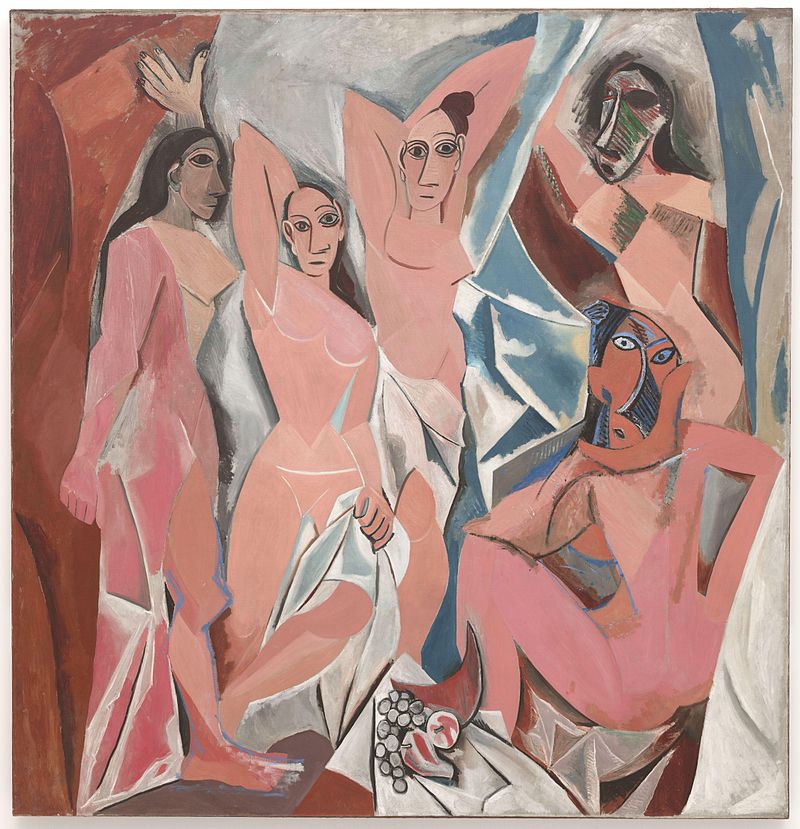Art Critique -- Picasso and Primitivism
 Fig1, Pablo Picasso, Les Demoiselles d’Avignon, 1907
Fig1, Pablo Picasso, Les Demoiselles d’Avignon, 1907
Primitivism is a deliberate social and ideological construct that arises from the anxiety of the fast-paced modernization in Europe. Antliff and Leighten pointed out that the term consists of a set of oppositions against the idea of European civilization mapped out in four domains: time/space, gender, race, and class. They argued that the Europeans impose primitivism with the stereotypical and appropriated images of the non-western colonies and races as well as the inferior class and gender within the European society. In other words, the idea of primitivism is imagined. It exists to accentuate what modern Europe was not: racially savage and non-civilized, societally and non-industrialized, gender-wise nonsensical and sexual, class-wise folk and non-urban. The authors did not further explore the connections between these domains but they did acknowledge that it is the interaction of these domains that brought primitivism to the fullest. Indeed, most primitivism works touch upon multiples aspects. In Gauguin’s the Spirit of the dead Watches, he depicted Tahitian nude lying on the bed, further connecting the piece to Manet’s Olympia, the female gaze, and prostitution in Paris.
Yet ironically, it is these same constructs with inherent negative connotations that became what many considered to be the escape route from the decadent European culture. The contradiction is obvious: how could the inferior, the uncivilized, the barbaric turn into the savior? How did the European primitivists receive and make use of their imagined primitivism culture?
Leighton’s The White Peril provided a close observation of Picasso’s primitivism, which I perceived as an explanation to this question. The author brings colonialism and anti-colonialism in inspection: revealing that the publicly perceived African colonial narrative was very much under the influence of popular press and their exotic illusion; whereas anti-colonialists discourse was debunking the colonial rhetoric. As for Picasso’s primitivism, the author critiqued that “… for anarchist avant-gardists, African art and culture had a primitivizing mission for Europe. Picasso simultaneously condemns the colonial policies that brought masks to Europe, yet embraces the very stereotypes that tag African culture as degenerate, as a recuperative cure at home”. In Les Demoiselles d’Avignon, Picasso incorporated the African mask, an object of imaged savagery, irrational, barbarism, to repel the spectator and subvert the European tradition. After all, Picasso, as many other primitivist artist, failed to speak to the alien culture, but only used it as an appropriated imagery in a European context.